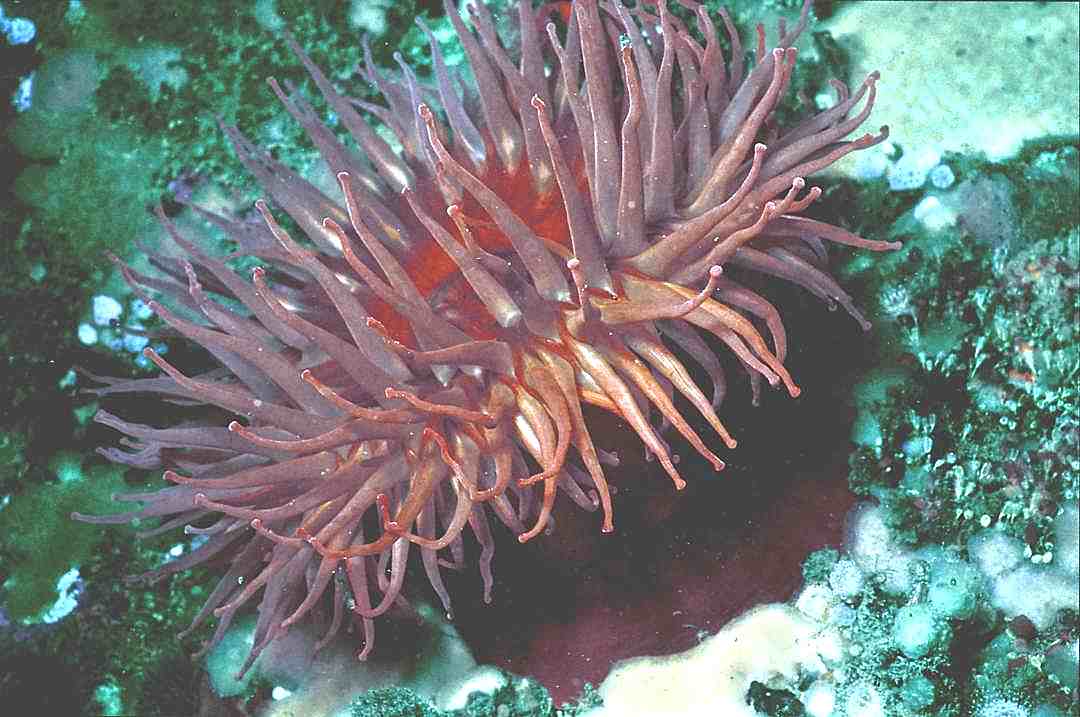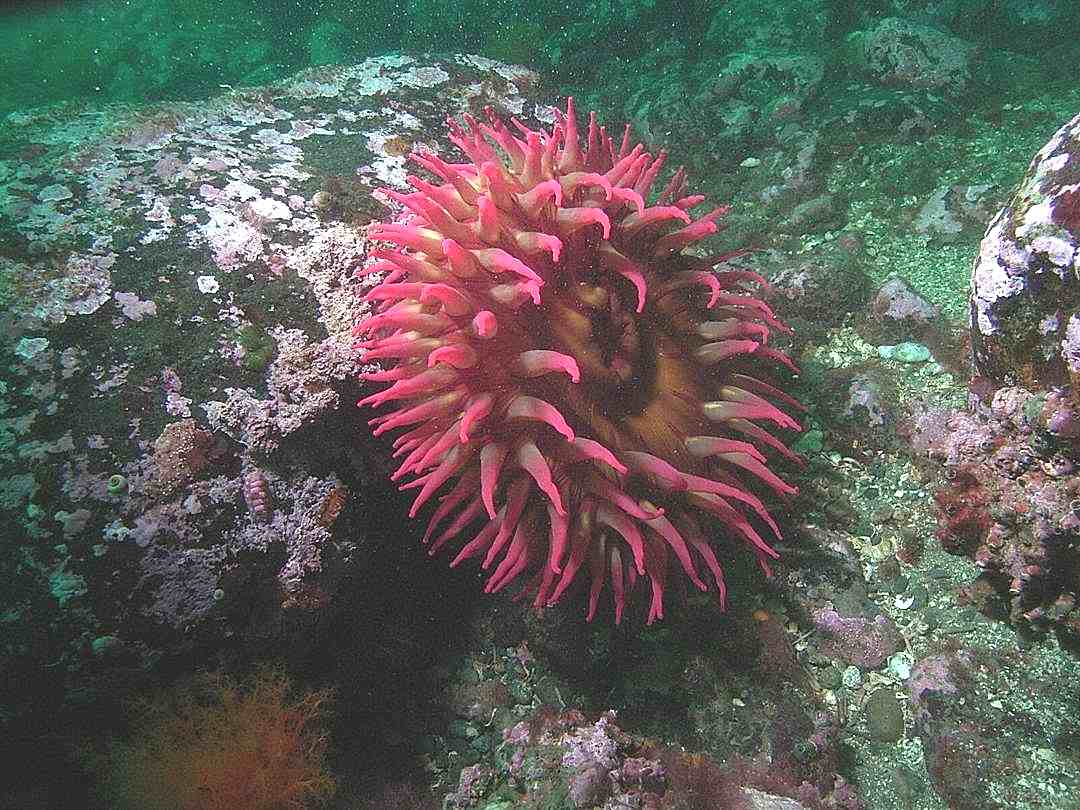Urticina piscivora is one of the largest Northern Pacific sea anemones. You can find this type of species from La Jolla, Mexico to Alaska, it can grow about 8 inches (20 centimeters)
Urticina piscivora was called Tealia Anemone. The structure of this anemone consists of a bag formed by three layers a non-cellular “mesoglea” between two tissues, an outer layer called “epidermis” and an internal called gastrodermis.The interior of the bag is the gut also known as gastrovascular cavity. Sheets of tissue or septa extend out form the body wall dividing the gut into compartments wich manifests on the surface as tentacles. Many of the anemones have their tentacles in multiples of six.
| Domain | Eukarya |
| Kingdom | Animalia |
| Phylum | Cnidaria |
| Class | Anthozoa |
| Genus | Urticina |
| Species | piscivora |
| Common Name | Fish eating anemone |
Inside the centers of septa, they are often elaborated and called septa filaments .Heavily loaded with stinging cells or nematocysts. Stinging cells are used to immobilize their prey.Urticina piscivora eats small fish.
Sexes are generally separated in sea anemones, but some species may be serial hermaphrodites, functioning males during one spawning and females at a later time. The typical reproductive pattern is to spawn into the water where fertilization occurs. Asexual reproduction occurs in some sea anemones some can reproduce by splitting by two (binary fission), and others will leave little piece of the pedal disk behind as they move, (pedal laceration),
| This file is provided as part of a collaborative effort by the students, faculty, staff and volunteers of Pearson College UWC. |
Feb. 2002 | Nora Lozano Yr.28 |


